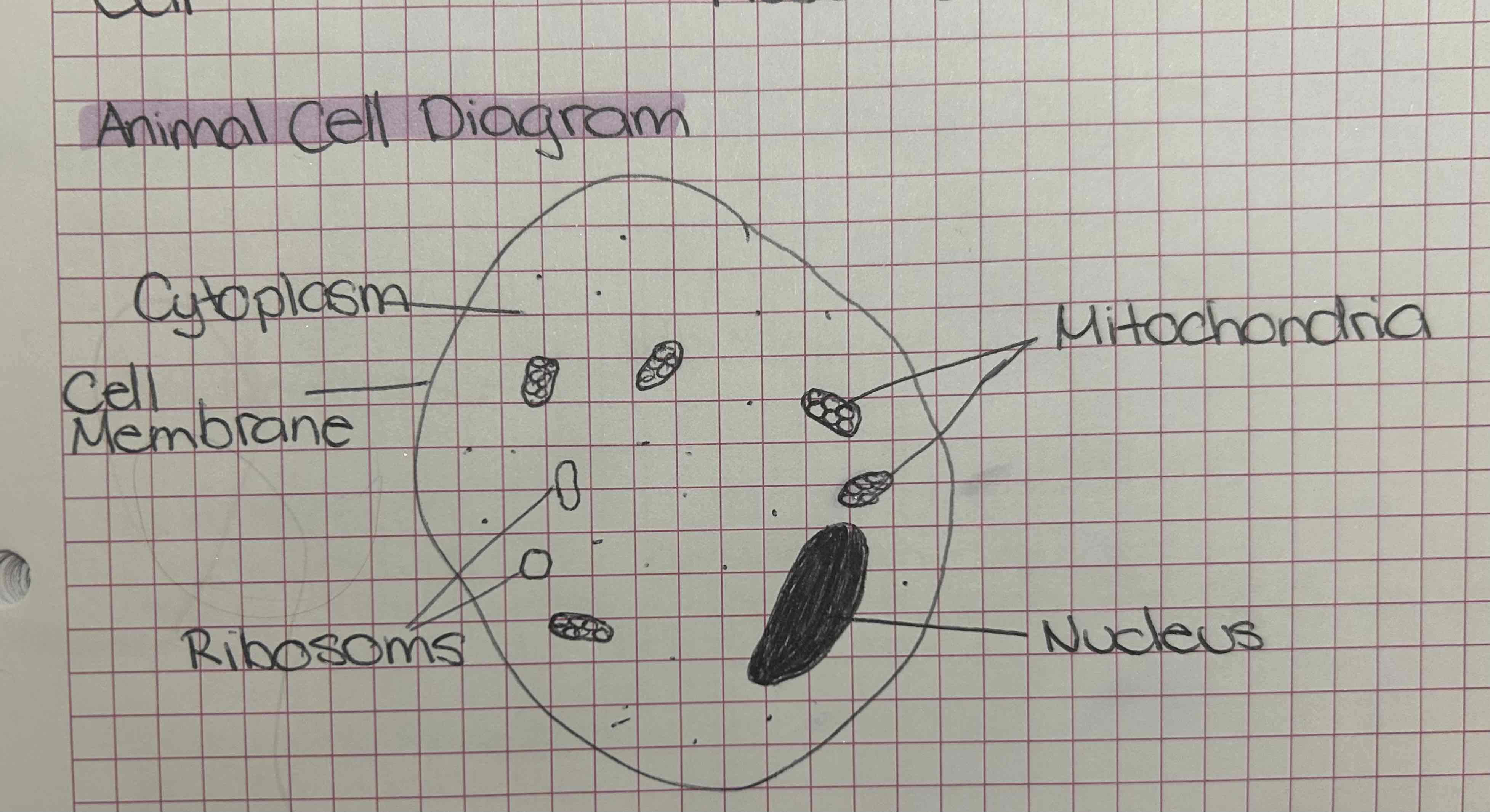Combined Science 1º Period
1/29
Earn XP
Description and Tags
Name | Mastery | Learn | Test | Matching | Spaced |
|---|
No study sessions yet.
30 Terms
What are the 7 characteristics of living organisims?
Movement, respiration, sensitivity, growth, reproduction, excretion, nutrition.
What is movement?
An organisim changing position or place.
What is respiration?
Chemical reactions in cells taking nutrients and breaking them down to release energy.
What is sensitivity?
Detecting and responding to changes in the environment.
What is growth?
A permenent increase in size.
What is reproduction?
Making more of the same kind of organism.
What is excretion?
The removal of waste product.
What is nutrition?
Taking in materials for energy and growth.
Animal Cell Diagram

Nucleus
contains genetic information (DNA), is responsible for reproduction
Mitochondria
where the cell creates energy
Cytoplasm
a jelly-like substance where all the cell reactions take place
Cell Membrane
controls what goes in and out of the cell, e.g oxygen, glucose and waste
Ribosomes
creates protein for the cell in order to create new structures.
Plant Cell Diagram
Chloroplasts
for photosynthesis
Cell Wall
helps the cell keep its rigid state
Vacuoles
used as storage
Bacteria Cell Diagram
Circular DNA
a closed-loop structure of DNA that contains genetic information and can replicate independently.
DNA Plasmids
small, circular pieces of DNA in bacteria that carry extra genes, often giving advantages like antibiotic resistance.
How to calculate magnifictation
image size/actual size
Postively Charged Ions
cations
Negatively Charged Ions
anions